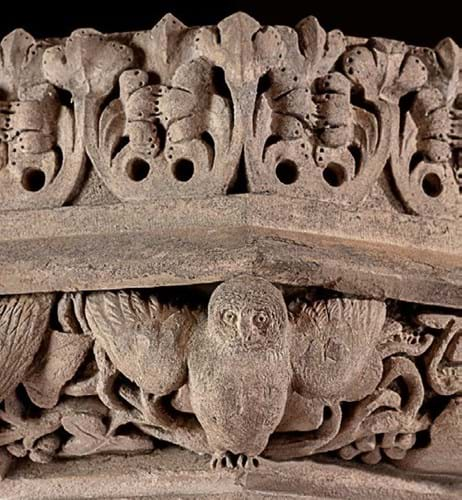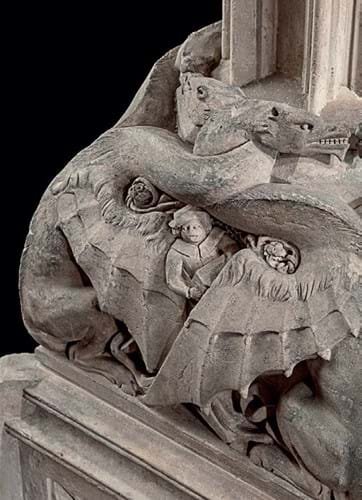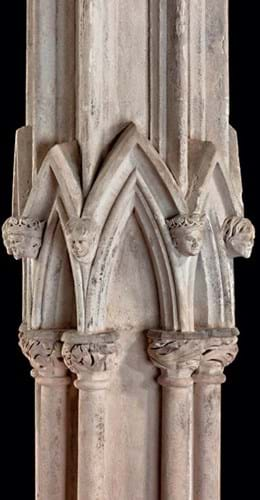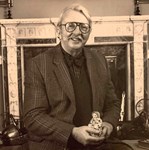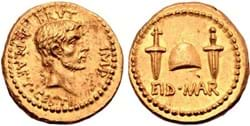The torchère, 6ft 11in (2.10m) high, was originally one of a set of 10 produced by Coade & Sealy of Lambeth in 1810 with each individually designed by Thomas Hopper (1776-1856).
They were supplied to George, Prince of Wales (later King George IV) for the grand Gothic-revival conservatory at his London residence, Carlton House.
Demolished in 1827, the magnificent interior of the conservatory survives through illustrations and written accounts which include descriptions of the other Coade stone works it contained, depicting kings, bishops and a pilgrim as well as a central fountain with eight dragons. The torchères each held brass lamps with six burners and originally stood on black marble plinths.
The one in question is suitably elaborate. Foliate designs, quatrefoils and gothic arches are complemented by carved and moulded ornaments in the shape of owls, the heads of kings and bishops, entwined dragons, a hooded musician and a child pulling a cat’s tail.
After their removal from Carlton House, the torchères were moved to the Coffee Room at Windsor Castle. Later they were split up.
Six went to Leeds Castle after coming for sale at Christie’s in 1970, another went to the same auction house in 1989 and was acquired for the National Museum of Wales, and one went to the Victoria and Albert Museum. Another is in the Huntington Library Collection, California.
Maastricht negotiation
Negotiations over the present torchère began at TEFAF Maastricht 2023 where the Sutton Coldfield dealership was standing for the second time. Offered for a five-figure sum, the piece had a provenance back to the collection of Robert Gordon Cooke (1930-87) of Athelhampton House in Dorset.
It is signed, inscribed and dated Coade & Sealy Lambeth 1810. This was one of the attractions for the museum: the connection to the British businesswoman Eleanor Coade (1733-1821). In 1769 she purchased an artificial stone factory in Lambeth and quickly began managing it directly.
The firm was devoted to creating stoneware of high quality, artificial ceramic-like stone. Coade’s products were durably moulded, weather-resistant and popular.She produced stoneware for The Royal Pavilion in Brighton, the original Twinings shop on the Strand and St George’s Chapel in Windsor.
Though there were many artificial stone businesses in the 18th century, hers was the best and only one to survive.
Successful businesswoman
Coade herself was a competent administrator, ferocious in her quality control and energetic in the promotion of her product, making her a rare example of a successful businesswoman on independent terms from that era.
Dealer Jonathan Coulborn said: “Very few women are recorded producing works of arts in Georgian England, especially in the field of architectural stoneware and this acquisition by The Fitzwilliam Museum will allow it to be appreciated by the public for years to come.”



